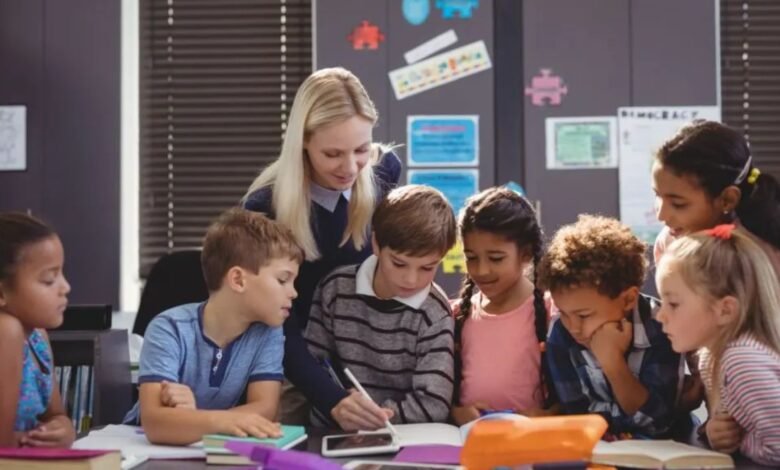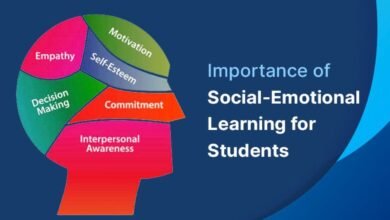Inclusive Education: Strategies for Teachers

Inclusive education is a philosophy and practice that ensures all students, regardless of their abilities, disabilities, or backgrounds, have equitable access to quality education. This approach is not just about placing students with diverse needs in general education classrooms but also about adapting teaching methods, curricula, and classroom environments to accommodate and support every learner. As more schools worldwide adopt inclusive education models, teachers play a critical role in implementing strategies that promote inclusion and cater to the unique needs of each student. This article will explore key strategies teachers can use to create and maintain an inclusive classroom.
Understanding Inclusive Education
Inclusive education is rooted in the belief that all children, regardless of their abilities or disabilities, should learn together in the same classroom. It challenges traditional education models that segregate students based on their physical, intellectual, or emotional needs. Instead, inclusive education promotes a collaborative, supportive learning environment where diversity is celebrated and individual differences are respected.
The concept of inclusive education aligns with the broader principles of social justice, equity, and human rights. It recognizes that every student has the right to participate in all aspects of school life and that schools must adapt to meet the diverse needs of their students. Inclusive education also emphasizes the importance of a sense of belonging, where every student feels valued and included in the learning community.
However, achieving true inclusion requires more than just placing students with disabilities in mainstream classrooms. It requires a fundamental shift in how teachers view their role, how they deliver instruction, and how they assess student progress. Teachers must be equipped with the knowledge, skills, and resources to address the diverse needs of their students and to create a classroom environment that supports the learning of all students.
Differentiated Instruction: Tailoring Lessons for Diverse Learners
Differentiated instruction is a key strategy in inclusive education. It involves tailoring teaching methods and materials to meet the varied needs, interests, and abilities of all students in the classroom. This approach recognizes that students learn in different ways and at different paces, and it allows teachers to provide multiple pathways for students to achieve the same learning goals.
To implement differentiated instruction, teachers can start by assessing the individual strengths, weaknesses, and learning styles of their students. This assessment can inform the development of lesson plans that incorporate a variety of teaching methods, such as visual, auditory, and kinesthetic activities. For example, a teacher might use graphic organizers to help visual learners understand complex concepts, while providing hands-on activities for kinesthetic learners.
In addition to varying teaching methods, differentiated instruction also involves modifying the content, process, and product of learning activities. For instance, teachers can present information at different levels of complexity, provide additional support or scaffolding for students who need it, and offer a range of options for demonstrating understanding, such as written reports, presentations, or creative projects.
Differentiated instruction requires careful planning and flexibility, but it is a powerful tool for meeting the diverse needs of students in an inclusive classroom. By providing multiple entry points to learning, teachers can ensure that all students have the opportunity to succeed, regardless of their individual abilities or learning styles.
Universal Design for Learning (UDL): Designing Accessible Learning Environments
Universal Design for Learning (UDL) is another important strategy for promoting inclusion in the classroom. UDL is an educational framework that guides the design of learning environments to be accessible and effective for all students, regardless of their abilities or disabilities. The UDL framework is based on three main principles: providing multiple means of engagement, representation, and expression.
The first principle, multiple means of engagement, focuses on motivating students by offering them choices in how they learn and participate in the classroom. For example, teachers can provide options for working in groups or independently, allow students to choose topics for research projects, or incorporate technology and multimedia into lessons to capture students’ interests.
The second principle, multiple means of representation, involves presenting information in different formats to accommodate diverse learning styles. This might include using visual aids, audio recordings, or interactive activities to supplement traditional lectures and readings. By providing information in various formats, teachers can ensure that all students, including those with sensory or cognitive disabilities, can access and understand the material.
The third principle, multiple means of expression, encourages teachers to offer students various ways to demonstrate their understanding of the material. This could involve allowing students to choose between writing an essay, creating a video, or giving a presentation. By providing different assessment options, teachers can accommodate students’ strengths and preferences, making it easier for all students to succeed.
By applying the principles of UDL, teachers can create a more inclusive and flexible learning environment that supports the diverse needs of their students. UDL not only benefits students with disabilities but also enhances the learning experience for all students by promoting creativity, critical thinking, and engagement.
Collaborative Teaching: Working Together to Support Inclusion
Collaborative teaching, also known as co-teaching, is a powerful strategy for promoting inclusion in the classroom. In a co-teaching model, two or more educators share the responsibility for planning, delivering, and assessing instruction. This approach allows teachers to pool their expertise and provide more individualized support to students.
There are several models of co-teaching, each offering different benefits for inclusive education. In the one-teach, one-support model, one teacher leads the instruction while the other provides additional support to students who need it. This model allows for more targeted assistance and ensures that all students are engaged and supported during lessons.
In the parallel teaching model, both teachers instruct the same material simultaneously but to different groups of students. This allows for smaller group sizes, which can be particularly beneficial in an inclusive classroom where students may need more individualized attention.
Another model, station teaching, involves dividing the classroom into different stations, each with a specific activity or focus. Teachers rotate between stations, providing instruction and support to small groups of students. This model encourages active learning and allows students to engage with the material in various ways.
Collaborative teaching also includes team teaching, where both teachers share equal responsibility for instruction and interact with the entire class. This model promotes a dynamic and interactive learning environment where teachers can model effective communication, collaboration, and problem-solving skills.
Collaborative teaching offers numerous benefits for inclusive education, including increased instructional support, more diverse teaching strategies, and greater opportunities for student engagement. It also allows teachers to share the workload and learn from each other’s strengths and expertise.
Building a Positive Classroom Climate: Fostering Respect and Belonging
Creating a positive classroom climate is essential for successful inclusive education. A positive classroom climate is one where all students feel respected, valued, and included. It is a safe and supportive environment where students are encouraged to take risks, express their opinions, and learn from their mistakes.
To build a positive classroom climate, teachers should start by setting clear expectations for behavior and creating a classroom culture based on respect, empathy, and cooperation. This involves establishing classroom rules that promote kindness, inclusivity, and respect for diversity. Teachers should also model these behaviors and reinforce them through positive reinforcement and consistent consequences.
In addition to setting expectations, teachers can foster a sense of belonging by building strong relationships with their students and encouraging positive relationships among peers. This can be achieved through activities that promote teamwork, collaboration, and mutual respect, such as group projects, peer tutoring, and class discussions.
Teachers can also create a welcoming and inclusive classroom environment by incorporating diverse perspectives and materials into their lessons. This might include using books, videos, and other resources that reflect the diverse backgrounds and experiences of their students. By celebrating diversity and promoting inclusivity, teachers can help all students feel seen, heard, and valued.
A positive classroom climate also involves creating a physically and emotionally safe environment for all students. This includes addressing bullying, harassment, and discrimination, and providing support for students who may be struggling with social or emotional challenges. Teachers should be proactive in identifying and addressing issues that may affect the well-being of their students and should provide appropriate resources and referrals when necessary.
Ongoing Professional Development: Staying Informed and Reflective
Inclusive education is an evolving field, and teachers must commit to ongoing professional development to stay informed about best practices and new strategies for inclusion. Professional development opportunities can include workshops, conferences, online courses, and collaborative learning communities.
Engaging in professional development allows teachers to deepen their understanding of inclusive education, learn new instructional strategies, and reflect on their teaching practices. It also provides opportunities for teachers to connect with colleagues, share experiences, and gain insights from other educators who are also working to create inclusive classrooms.
Teachers should also engage in self-reflection and seek feedback from students, colleagues, and administrators to continuously improve their teaching practices. Reflective practice involves regularly assessing the effectiveness of teaching strategies, considering the diverse needs of students, and making adjustments as needed.
In addition to formal professional development, teachers can benefit from staying informed about research and trends in inclusive education. This can involve reading professional journals, participating in online forums, and staying connected with professional organizations that focus on inclusive education.
Ongoing professional development is crucial for maintaining a high level of expertise in inclusive education and ensuring that teachers have the tools and knowledge to support the diverse needs of their students.
Conclusion
Inclusive education is a powerful approach to teaching that ensures all students, regardless of their abilities, disabilities, or backgrounds, have the opportunity to learn and succeed in a supportive and equitable environment. For teachers, creating an inclusive classroom requires a combination of strategies, including differentiated instruction, Universal Design for Learning, collaborative teaching, and building a positive classroom climate.
By implementing these strategies and committing to ongoing professional development, teachers can create a learning environment where all students feel valued, respected, and included. Inclusive education not only benefits students with disabilities but also enriches the learning experience for all students by promoting diversity, equity, and social justice in the classroom.



